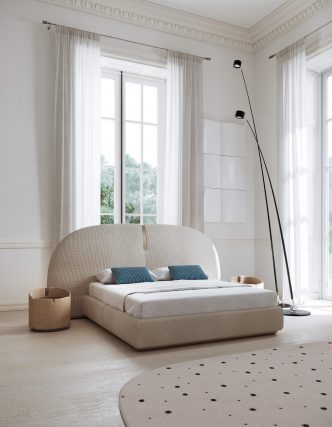Did you know that refurbishing your office’s or workspace’s vintage office furniture isn’t just an economical choice but also an exciting project that can breathe new life into your place of work?
When you choose to restore old furniture rather than replace, you give a piece of history a new lease on life. How to refurbish vintage office furniture? Check out the following guide to help you do it on a budget, ensuring your office is both stylish and functional with newly refurbished vintage office solid wood furniture pieces.
Be A Person With A Plan
Begin with a clear plan. Identify the pieces you want to do restoration or refurbish and what each item requires. Prioritizing tasks based on their complexity and cost will help you manage your budget more effectively and efficiently.
Tools You Need
How to refurbish vintage office furniture successfully? You need the appropriate tools to carry it out. Per expert furniture refurbishers, the following are the top tools you need:
- A pair of work gloves, goggles for eye protection, and the like
- Gripping Pliers (Maun make an excellent range)
- Paint stripper, different paint finishes, paintbrushes, putty knife, and so on
- Working tools like screwdrivers, hammers, grit sandpaper, and others
- Wood filler and other refurbishing-specific materials
Source Wisely
Materials can be sourced economically through a variety of channels. Explore local thrift stores, flea markets, and online selling platforms for pre-owned supplies and tools, as well as antique furniture that are still usable. Often, these places have hidden gems – old piece of furniture fixtures at a fraction of the cost.
Plus, connecting with other refurbishing enthusiasts can lead to swapping or acquiring refurbishing materials at little to no cost. For instance, they may have extra old tarpaulins or newspapers you can use on your laminate flooring to prevent any accidental spillage when doing repainting.
Prepare, Prepare, Prepare
Thoroughly clean each piece of furniture before starting refurbishing. Use gentle cleaners on clean cloth to preserve the integrity of the wood and follow up with sanding to create a smooth base for any new finishes. Cleaning also allows you to assess your furniture more closely for any hidden issues that you can address later on.
Make Repairs Before Moving Forward With Refinishing
Ensure the structural integrity of your antique furniture before going for refinishing. This can be done by tightening screws and joints, replacing or repairing damaged parts, and the like. Basic woodworking skills may be required; luckily, simple guides on the web can help you get the job done.
Pick The Right Furniture Finish
Choosing the right finish can significantly impact the final look. Paint is a popular choice for a fresh, modern look, but stains and varnishes can enhance the natural beauty of wood. Consider the use of the furniture and choose a durable finish that can withstand everyday wear and tear. Don’t just settle on what’s trending or hot in the office design space.
Don’t Forget The Details
Pay attention to detail to ensure top-notch furniture refurbishing results. Make use of quality brushes or a sprayer for an even coat of paint. Take your time with sanding between coats if you’re painting. For stains, apply with a cloth to achieve an even color. Finishing touches such as new hardware can completely change the look of your piece, so choose knobs or pulls that reflect your style.
Be Money Smart With Upholstering
If your project includes chairs or sofas, reupholstering can be a cost-effective way to make a dramatic change. Select durable fabrics that can handle regular use. Look for end-of-roll fabrics or remnants which are often discounted.
Ride The Green Wave
Being eco-friendly when refurbishing your office’s vintage furniture can be done in many ways. Choose planet-friendly project materials, such as eco-conscious paints, reclaimed wood, and so on. Also, you can do your part in saving the planet by preventing waste as much as possible.
Imperfect Is Perfect
Part of the charm of vintage furniture lies in its imperfections. Small nicks, scratches, or an uneven finish can add to the character of the piece. Instead of striving for a like-new appearance, embrace these imperfections and let them tell a story. This approach not only reduces the pressure to achieve perfection in your refurbishing efforts but also celebrates the rich history of your furniture.
Be Smart With Your Office Furniture Placement
Once your pieces are refurbished, consider their placement in your office. Consider the overall design of your office and arrange your pieces to enhance the workflow and aesthetic appeal. A well-placed vintage wood desk or a brightly colored office chair can become a focal point of your office.
Meanwhile, make use of rugs, decorative pillows, throws, and so on to add warmth and texture. These elements can also help to tie together the look of the office, creating a cohesive and inviting space.
Lighting is another aspect that can significantly enhance the ambiance of your office. Select lamps that complement your refurbished pieces to highlight their beauty and uniqueness.
Be On Top Of Your Newly Refurbished Funiture’s Upkeep
Once your vintage office furniture has been refurbished, maintaining its condition is crucial for longevity. Regular cleaning with appropriate products will keep your furniture looking its best. Remember to only utilize natural and gentle cleaners. Use soft cloth towels when wiping off surface dirt on the entire surface – never use steel wool and others.
In addition, make use of coasters and desk pads to protect surfaces from scratches and spills. Proper maintenance not only preserves the appearance but also the function of your furniture.
To Conclude
Refurbishing vintage office furniture allows you to create a personalized workspace that reflects your style and values. It’s not just about saving money; it’s about sustainability, creativity, and personal satisfaction. The end result? Each piece you refurbish will carry a story and add character to your office.
















